
by Mark Tancig | Sep 16, 2019
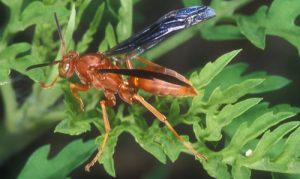
Paper wasps can hide among vegetation and surprise gardeners. Credit: UF/IFAS
As summer comes to a close, many gardeners are getting their landscapes back in shape after the long, hot summer months. There are likely some large weeds and/or vines that have taken over areas where they are not wanted. As you begin to hack these back, it is wise to be on the lookout for wasps and yellow jackets. These stinging insects pack a punch and are particularly active this time of year.
Wasps and yellow jackets are closely related in the insect family Vespidae. These are social insects, similar to ants and bees, that have a division of labor with a queen and workers (both female) carrying out specific tasks for the colony. Males arise from unfertilized eggs and are only needed for reproductive purposes. Once they mate with a female from another nest, they die. Once the fertilized females emerge in late fall, they will overwinter under the bark of a log, or other safe habitat, until spring, when they start a new colony. Unlike bees, who die after a single sting, wasps, yellowjackets, and hornets can sting multiple times. Yellowjackets and hornets even emit an alarm pheromone that causes other members of the nest to aggressively defend the colony.
While there are many different species of wasp in Florida, including the paper, red, mason, potter, and mud dauber wasps, the paper and red wasps (Polistes spp.) are the ones that tend to be most aggressive when provoked and cause a harmful sting. Their nests are often found under house eaves or hidden in amongst shrubbery. These nests hidden in vegetation are the ones that gardeners typically run into when trimming or weeding.
There are three species of yellowjacket in Florida, including the eastern yellowjacket (Vespula maculifrons), southern yellowjacket (Vespula squamosa), and baldfaced hornet (Dolichovespula maculata). All three can be aggressive and sting humans, especially if they feel threatened, such as when pruning or working over or near a colony. Yellowjackets build extensive colonies underground, though can also build colonies in hay, palm fronds, and other loose debris aboveground. These underground colonies usually have a single entrance but can also have multiple entrance holes. Hornets build aerial colonies. Gardeners are most likely to have run-ins with yellowjackets since hornet nests are typically up in trees and more obvious than an underground yellowjacket colony.
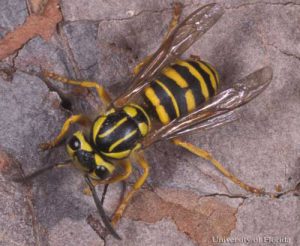
Southern yellowjackets create underground colonies that can hold over 2,000 yellowjackets. Credit: UF/IFAS
While these insects can be a major pain, figuratively and literally, they actually do help out us gardeners. The main food source of wasps, yellowjackets, and hornets are caterpillars and beetle larvae, which are often garden pests. They are also native pollinators. Therefore, it’s best that we accept some in the landscape, manage colonies in high-traffic areas, and prevent encounters with them. To reduce your chance of weeding right into a wasp nest, take a stick and knock around the vegetation to see if any are hiding in the brush before getting started. Be ready to run. Yellowjackets are harder to avoid as they are stealthy in their underground bunkers.
When it comes time to remove these insects from near a structure or heavily trafficked area, you may want to consider hiring a professional pest control company. Wasps can be managed by most homeowners with a broom (if the nest is small and/or relatively inactive) or aerosol insecticides specifically formulated for wasp control. Yellowjackets and hornets are trickier to deal with and should be approached very cautiously. Spraying aerosols into a yellowjacket entrance hole is dangerous and may not be very effective as some colonies can be up to a foot wide and contain over 2,000 yellowjackets. Any attempts to control wasps, yellowjackets, and hornets should be done in the evening when they are less active and with appropriate clothing that covers the skin.
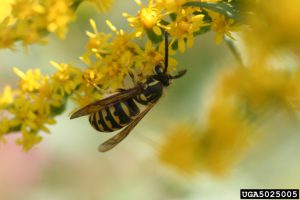
Yellowjackets are pollinators and eat caterpillar pests! Credit: Whitney Crenshaw, Colorado State University, Bugwood.org
For more information on wasps, yellowjackets, hornets, and other stinging insects, see the Biting and Stinging Insects section of the UF/IFAS EDIS site (https://edis.ifas.ufl.edu/topic_biting_and_stinging_pests) or contact your local Extension Office.
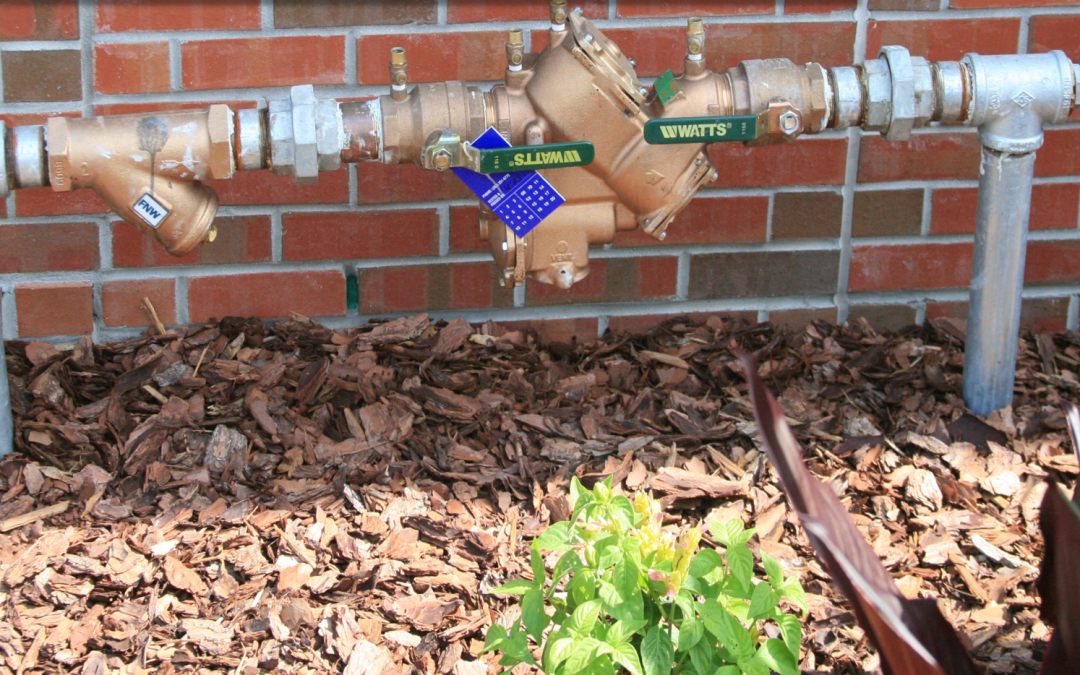
by Mark Tancig | Aug 19, 2019
Horticulture Extension Agents are asked a wide variety of questions, from plant identification to erosion control, from herbicide selection to water regulation. We’re usually expected to know the answer on the spot, too. We’re also expected to write a lot and share information with the public. Well, oftentimes, those factors come together to give us writing inspiration. A challenging question leads to research and gathering of information, which leads to an answer that should be shared so others can learn from it. A recent question regarding the use and regulation of backflow preventers from a longtime gardener inspired my latest knowledge quest and what I found seemed important enough to share with other gardeners.
I would guess that backflow preventers probably aren’t a common item on people’s minds, unless you’re a plumber or in the water supply business. However, backflow prevention devices help ensure that when we turn on the tap to drink, cook, clean, flush, bathe, and yes, garden, that the water isn’t contaminated.
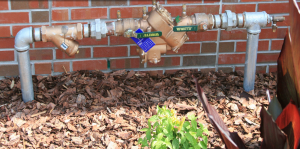
These larger backflow preventers are required to be installed and regularly inspected for certain plumbing systems. They usually hide under utility boxes or fake rocks. Credit: UF/IFAS.
Backflow preventers do just what their name implies, they prevent backflow. Backflow in a plumbing system happens when pressure in another part of the system drops, causing water from other locations to move in to equalize the pressure difference. This can be a problem in a potable water system when the main line loses pressure and water from a contaminated line is pulled in to the main line, potentially contaminating many users water. This can happen when a pipe breaks or during fire-fighting activities, for example. Contaminants of concern include chemical and biological agents, such as heavy metals, industrial compounds, bacteria, and pesticides.
Many of our indoor fixtures have built-in backflow preventers, such as toilets and bathtubs. Exterior backflow preventers, usually found under boxes or fake rocks near the water connection, are required for plumbing systems considered to be more of a hazard risk or where higher pressures could more easily flow back into the line. Examples of such plumbing systems include those with fire-fighting systems, hospitals, several-storied buildings, those associated with certain industrial processes, and, finally back to gardening, irrigation systems. In 1990, the Florida Building Code required that all residential irrigation systems include a backflow preventer. While the Florida Building Code also requires backflow preventers on all hose connections, i.e. spigots, many residential homeowners do not have these in place nor do water suppliers have the budgets to inspect each home’s spigots. A survey of 200 homes in the Midwest during 2002 found that 91% of homeowners did not have a backflow preventer attached to their spigots. I’m not sure north Florida would fare much better.
Gardeners should be aware of this responsibility and go ahead and install a backflow preventer on their outdoor spigots. This is especially true for those that use hose-end fertilizer or pesticide applicators, mix pesticides, or leave a pressurized hose connected to a sprinkler or other device. In addition to chemicals, all sorts of bacteria, algae, and other contaminants can grow in or enter a hose and get sucked back into the house’s line or, worse, the public supply line.
Backflow preventers are cheap and easy to install. A simple brass backflow preventer that connects between the spigot and the hose runs from $3 to $10 and will typically last for several years. You know it’s still working when water leaks out of the backflow preventer as you turn the spigot off. That’s a pretty easy and inexpensive fix to make sure the potable water source stays clean.
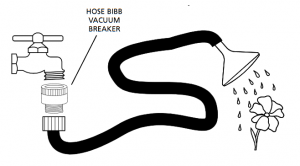
A simple and inexpensive hose bibb/spigot backflow preventer can help gardeners protect their potable water supply. Credit: Univ. S. Cal.
For more information on backflow prevention devices, and to keep writing ideas coming in, please contact your local UF/IFAS Extension Office.
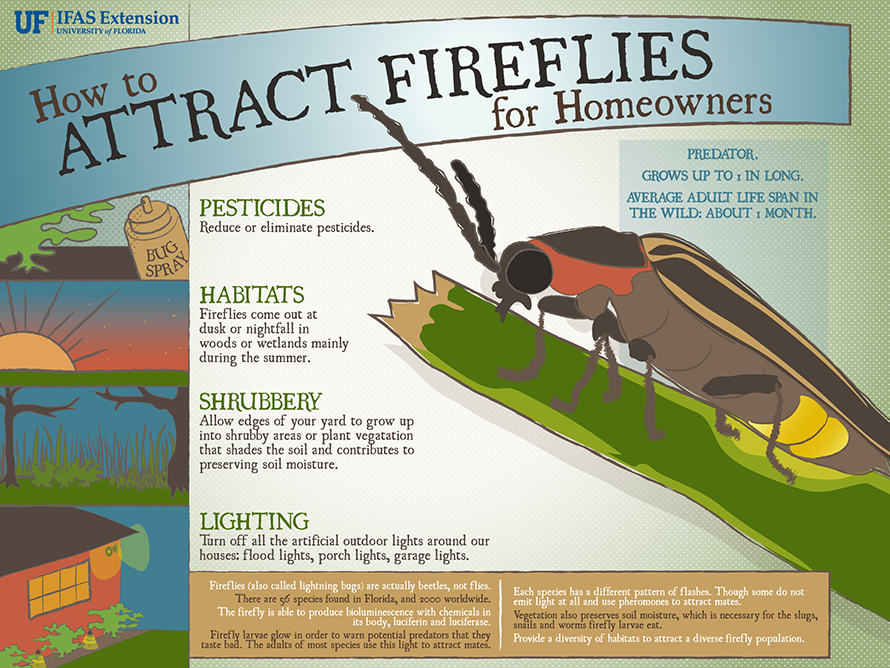
by Mark Tancig | Jul 11, 2019
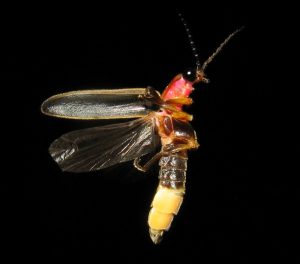
An adult firefly showing off its characteristic beetle wings and bioluminescent abdomen. Credit: Art Farmer, Creative Commons.
Many of us have memories of warm summer nights watching fireflies. Some of us might have even chased and caught a few to put in mason jars for observation, fascinated by their glowing abdomens. Floridians have the best chance to see these unique insects, as we have more known species than any other state. Recently, I’ve had many folks say that they see less fireflies these days, which got me looking into how these creatures live and what researchers know about their numbers.
Fireflies are actually a type of beetle in the Lampyridae family. They go through complete metamorphosis, meaning their immature larvae look completely different than the adults. A very unique characteristic of the family is the ability to produce light, known as bioluminescence. They do this in a very efficient way, creating very little heat, through the reaction of luciferin and luciferase along with oxygen, some energy, and other compounds. These light-producing compounds serve a dual purpose, warding off predators and attracting mates. The larvae of all Lampyridae benefit from the offensive taste of the compounds while only some adult Lampyridae use bioluminescence to attract mates. Each species of firefly has specific patterns of flashes. Males have the showiest light displays while females use more conservative light shows to signal back to potential mates.
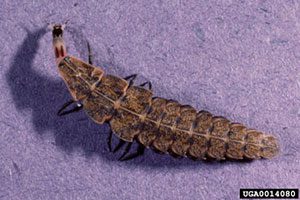
Firefly larvae taste bad to predators due to the compounds that produce light. Credit: Gerald J Lenhard, LSU, bugwood.org.
Larvae of fireflies live in the soil and feed on slugs, snails, earthworms, and other soft-bodied insects. The larvae develop in the soil during cooler months, preferring moist habitats, and emerge as adults in the late spring to early summer. Some species may emerge in the early spring. Adult fireflies feed on nectar and honeydew, though some females prey on smaller firefly species by fooling males close to them through light signaling. Adults with the ability to produce light are active at night, while non-bioluminescent adults are active during the day.
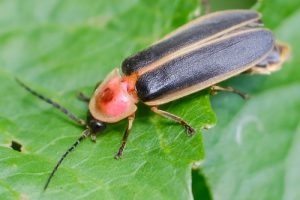
An adult firefly. Credit: Mirko Schoenitz, iNaturalist.org.
Entomologists specializing in fireflies have raised the concern that these classic summer-time insects are in decline. Reasons for the decline are associated with increased urbanization. Loss of suitable habitat and increased pesticide use, including broad-spectrum insecticides for home lawn insect control, negatively affect firefly larvae living in the soil. Researchers also point to urban light pollution as another cause. The ever-glowing night sky in populated areas, originating from house lights, ball fields, parking lots, and roadways, disturb firefly communication and reproduction.
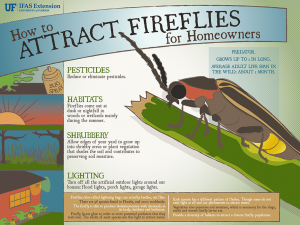
UF/IFAS infographic about fireflies. Credit: UF/IFAS.
Homeowners can help fireflies by leaving small patches of unmanaged landscaped areas, such as along property lines, and only using insecticides when absolutely necessary. If pesticides are needed to control lawn and garden pests, the use of more selective, low-toxicity products is preferable. Turning off unnecessary outdoor lighting is another step homeowners can take to encourage firefly populations. Residents of homeowner associations can work together to minimize excess lighting community-wide, saving electricity and maybe even fireflies.
For more information on fireflies and best practices to control lawn and garden pests, contact your local county extension office.
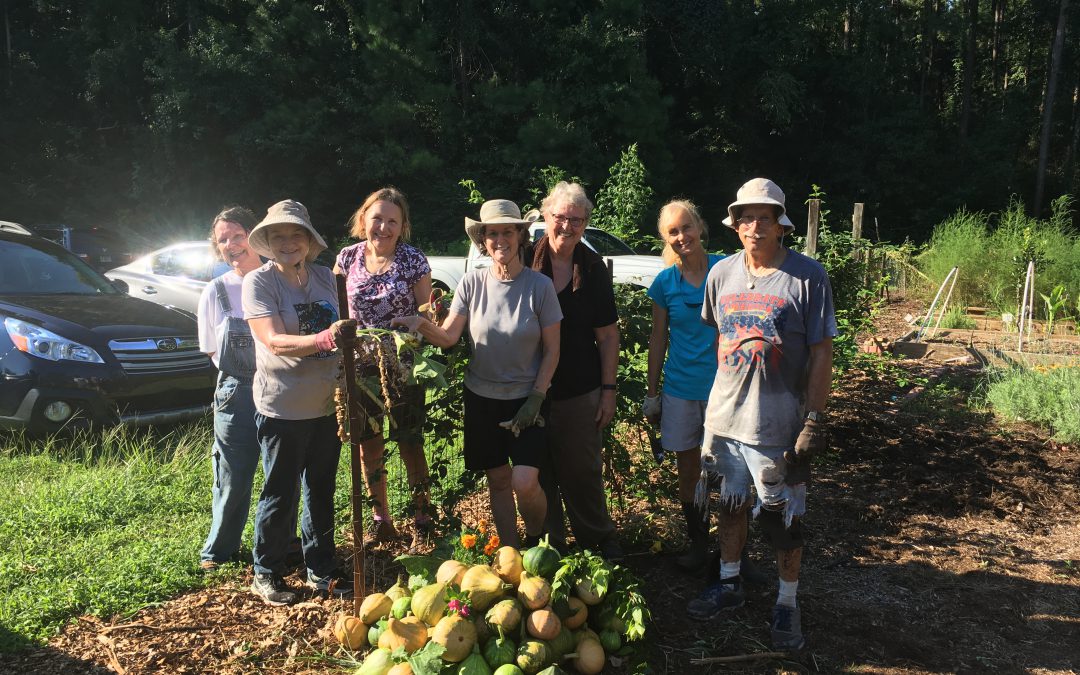
by Mark Tancig | Apr 16, 2019
During my three years working for the Extension Office, I have found that Extension work leaves you extended in many different directions. There are expectations to perform at many different levels and to serve many different constituent groups. From interactions with professional organizations, to assisting with community-wide events, to getting the word out to folks unfamiliar with Extension, it adds up to a lot of potential work out there.
Helping homeowners and/or industry with their specific issues is definitely where the rubber meets the road. Fortunately, in 1973, an extension agent in Washington State came up with a great plan – train interested volunteers in how to properly handle specific requests so they can help get all of this work done. And so was born the Master Gardener Volunteer (MGV) program. In Florida, we are entering the 40th year of the MGV program! Since National Volunteer Week is this week (April 7-13), I thought I would take the opportunity to celebrate the work of MGVs in our area.

In Leon County, one MGV, Janis, has been coordinating the vegetable gardening group, locally known as the VegHeadz, for 8 years. More than once, I’ve heard praises of Janis for her ability to get folks excited about “enter vegetable here”, maybe a Chayote squash, Malabar spinach, food forests, cover crops, soil organic matter, and the list goes on. What makes Janis such a great MGV is her ability to share gardening information, which comes from her pure passion for the topic and her desire to keep learning and experimenting. In addition to sharing information, the VegHeadz also donate much of the produce harvested from our office, approximately 300 pounds a year, to the Second Harvest Food Bank.
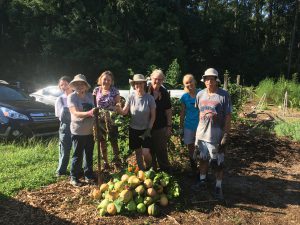
Our happy VegHeadz Group after a day of work in the garden. Led by the incredible Janis Piotrowski (center, black shirt). Credit: Mark Tancig
In counties throughout the panhandle, there are other MGVs providing research-based horticulture information to school groups and civic organizations. Many of them spend time helping to teach Floridians of the importance of protecting Florida’s natural resources while creating a beautiful landscape through the use of Florida-Friendly Landscaping principles.
Clearly, volunteers are great because they help UF/IFAS, and other organizations, get more work done without any monetary input. However, many studies have found that it’s not just the organization who benefits. Based on a review of research published by the Corporation for National and Community Service, volunteers not only give, but also receive the following benefits:
- Lower mortality rates, greater functional ability, and lower rates of depression than those who do not volunteer
- Physical and social activity and a sense of purpose at a time when their social roles are changing
- Higher levels of happiness, life-satisfaction, and self-esteem
The same research review found that volunteers have a greater level of trust in their community, greater level of trust in their local government, and are twice as likely to donate to charitable causes. So not only do the organizations and the individuals benefit, but the whole community shares in these volunteers’ selfless donation of expertise and time.
Now, during National Volunteer Week, be sure to thank a volunteer for their work. If you see MGVs at community events, please say thank you for their role in spreading research-based, environmentally-sound horticulture knowledge to the community.

by Mark Tancig | Mar 6, 2019
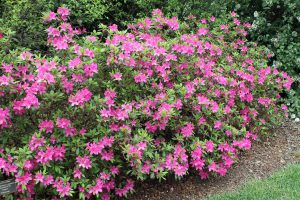
Azaleas are a beautiful shrub for the north Florida landscape, especially if pruned properly. Source: Larry Williams, UF/IFAS
The sight of azaleas in the north Florida spring just makes you feel good. They are so vibrant, and with such variation, that you can’t take your eyes off them. As an appreciator of these beautiful displays of color, nothing pains me more than to see an improperly pruned azalea during this time. If you must prune your azaleas, please, please only prune them once a year and only soon after flowering has ended! This public service announcement will hopefully ensure we all get to see the full azalea show. Otherwise, we’ll be left with mostly green hedges, some flowers uncomfortably tucked in the interior of the plants, or flowers poking out the sides like a middle-aged man’s balding head.
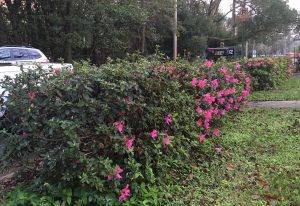
If pruned properly and at the right time, this azalea shrub would be a mass of flowers. Source: Mark Tancig, UF/IFAS.
The common flowering azaleas in landscaped settings are native to Japan and a relative of blueberries. They comprise many different hybrids, cultivars, and varieties of plants in the genus Rhododendron (Greek for rose-tree) and have been cultivated for centuries. Long ago, I’m sure, those who studied plants and tinkered with azaleas realized that their vegetative growth (new leaves and stems) ends soon after flower bud initiation. This means that later prunings, or multiple prunings throughout the year, will be taking off more developing flower buds than new leaf and stem growth.
To prevent depriving us all of less flowers, consider why – or if – they need pruning in the first place. Proper planning and planting can prevent azaleas, which naturally want to be a sprawling shrub, from growing into the sidewalk or driveway. If you’ve inherited azaleas that may be the right plant, but slightly in the wrong place, they can be heavily pruned every couple of years to keep them in check, and can even be transplanted. Azaleas are not a good choice for formal hedges. If given the right place and enough space, the only required pruning would be dead, diseased, or crossing branches.
If you decide you need to prune – whether to knock back for space or for general shape – only bust out the loppers once the flowers have withered on the ground… and then lock those loppers away so that you won’t be tempted. If you have landscapers working for you, remind them to keep the hedge trimmers away from the azaleas.

Azaleas are vibrant, even in black and white! Source: Florida State Archives, Florida Memory Project.
For the love of flowers, please prune azaleas thoughtfully, and share this information with others
P.S. We also have several species of native azaleas (including Rhododendron austrinum and Rhododendron canescens) that can be a beautiful addition to the landscape.



















